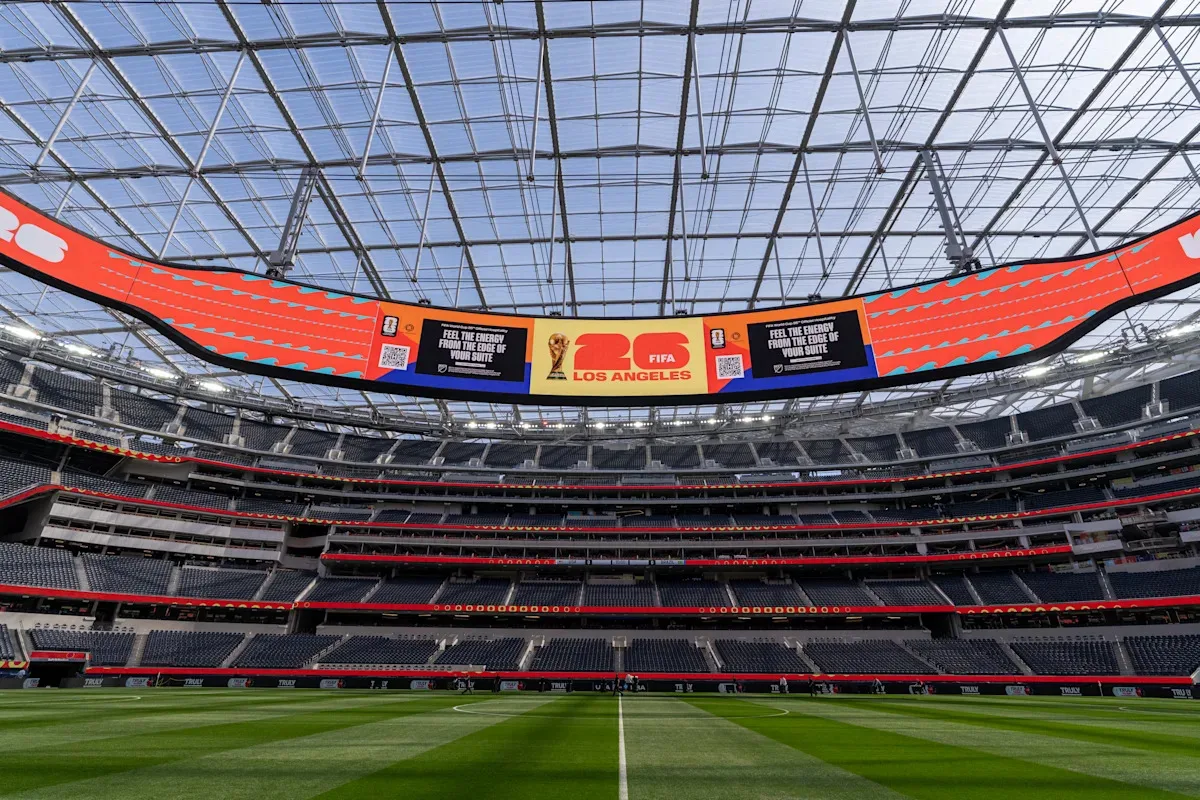Here's who the USMNT could face at the World Cup after FIFA unveils unveils draw plan

The U.S. national soccer team will not learn its opponents in World Cup group play until FIFA conducts the draw Dec. 5 in Washington. But on Tuesday, the Americans found out their June 12 opener at SoFi Stadium in greater Los Angeles will be against an opponent from the third pot of ranked teams.
That means they will begin Group D against one of the following: Norway, Egypt, Algeria, Scotland, Paraguay, Tunisia, Ivory Coast, Uzbekistan, Qatar, Saudi Arabia or South Africa. The United States cannot play the other Pot 3 team, Panama, because both are from the same confederation.
FIFA unveiled the procedures for the 48-nation draw, which, during a globally televised event at the Kennedy Center, will create 12 four-team groups.
As previously announced, the three host countries — the United States, Mexico and Canada — will join the nine highest-ranked qualified teams in Pot 1. They are Spain, Argentina, France, England, Brazil, Portugal, Netherlands, Belgium and Germany.
At No. 14 in the FIFA rankings, the United States will play its Group D opener against an opponent ranked as high as No. 29 (Norway) or as low as No. 61 (South Africa).
The second U.S. match — June 19 at Lumen Field in Seattle — will be against a team from Pot 2: Croatia, Morocco, Colombia, Uruguay, Switzerland, Japan, Senegal, Iran, South Korea, Ecuador, Austria or Australia. At No. 10, Croatia is the highest ranked. At No. 26, Australia is the lowest.
The Americans will close group play June 26 back at SoFi Stadium against a team from Pot 4. On the surface, that would suggest the weakest opponent in the group, such as Jordan, Cape Verde or New Zealand. However, FIFA also placed all six to-be-determined playoff winners in Pot 4, including four from European competition (possibly 12th-ranked Italy, Denmark, Poland and Türkiye.) The other two will advance out of an inter-confederation competition. All playoffs will take place in late March.
Finishing first in group play would pair the United States with a third-place team from one of five other groups in a Round-of-32 match July 1 at Levi’s Stadium in Santa Clara, California. By finishing second in Group D, the Americans would face the Group G runner-up July 3 at AT&T Stadium in Arlington, Texas.
On Tuesday, FIFA also announced top-ranked Spain and No. 2 Argentina would be placed in opposite pathways in the knockout stage, thus eliminating the possibility of them meeting before the July 19 final at MetLife Stadium in East Rutherford, New Jersey. Third-ranked France and No. 4 England would also be separated to avoid an early matchup in the knockout stage.
In principle, FIFA prevents a group from having more than one team from the same confederation drawn into it. The exception is Europe, which is represented by 16 teams. Hence, each group must have at least one, but no more than two, UEFA teams.
Although the draw will determine the groups, the match schedule, stadium assignments and kickoff times will not be finalized until the following day (Dec. 6).
“The match allocation process that follows the draw aims to ensure the best possible conditions for all teams while, where possible, enabling fans all over the world to watch their teams play live across different time zones,” FIFA said.
World Cup draw pots
(FIFA ranking in parentheses)
Pot 1: Hosts Canada (27), Mexico (15), United States (14); Spain (1), Argentina (2), France (3), England (4), Brazil (5), Portugal (6), Netherlands (7), Belgium (8), Germany (9).
Pot 2: Croatia (10), Morocco (11), Colombia (13), Uruguay (16), Switzerland (17), Japan (18), Senegal (19), Iran (20), South Korea (22), Ecuador (23), Austria (24), Australia (26).
Pot 3: Norway (29), Panama (30), Egypt (34), Algeria (35), Scotland (36), Paraguay (39), Tunisia (40), Ivory Coast (42), Uzbekistan (50), Qatar (51), Saudi Arabia (60), South Africa (61).
Pot 4: Jordan (66), Cape Verde (68), Ghana (72), Curaçao (82), Haiti (84), New Zealand (86), four European playoff winners, two inter-confederation playoff winners.
Συμπέρασμα
Σχετικά Άρθρα






